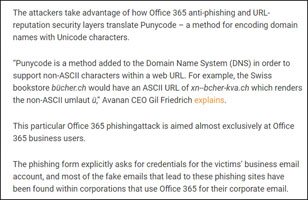Phishing Office
Discover effective strategies to fortify your office against phishing threats. Our guide covers secure email disposal, protecting sensitive information, involving law enforcement, promoting collective vigilance, and avoiding engagement with scammers. Elevate your cybersecurity measures to mitigate the risks of online fraud and contribute to a resilient defense against cyber threats.
Phishing Office
Phishing can happen when you are not expecting, even at the office.
Phishing scams, which involve fraudulent emails, are on the rise despite concerted efforts by authorities to combat them. The task of apprehending these scammers proves challenging for both law enforcement agencies and the FBI, particularly as they often target unsuspecting individuals in third-world countries, such as those in Africa. Individuals who receive suspicious emails from unknown sources should promptly report them to the relevant government authorities. Phishing email scams are gaining traction, with numerous offices across the United States being targeted by these perpetrators. In their attempts to deceive, scammers often send emails containing either malicious attachments or links, aiming to extract sensitive personal and financial information from executives within these offices. This trend underscores the growing sophistication and prevalence of phishing attacks, posing a significant threat to individuals and organizations alike.
Sophisticated Tactics: Unraveling the Grammar-Perfect Phishing Scams
Phishing emails, meticulously crafted by cybercriminals targeting offices, often exhibit a formal tone and impeccable grammar. These deceptive communications may present a seemingly urgent message, such as, "We have identified that your computer system is experiencing significant slowdowns and file errors. To rectify the issue, kindly click the link below to download our free diagnostic test tool." Should recipients fall prey to this ploy and initiate the download, scammers exploit the opportunity to pilfer critical data, including IP addresses and domain certificates from the compromised computer. Another tactic involves alarming messages claiming the presence of a new virus, like SLEEK25, damaging important files. The scammer's email urges recipients to provide their user ID and password for a purported spam version upgrade. Responding to such requests with sensitive information allows scammers to hijack crucial data from the targeted computer systems. These sophisticated phishing techniques highlight the need for heightened awareness and vigilance to thwart cyber threats.
Safeguarding Against Deceptive Tactics: A Closer Look at Phishing Threats
Phishing emails often masquerade as communications from legitimate organizations or individuals, making it challenging for unsuspecting recipients to discern the fraudulent nature at first glance. A vigilant eye is essential, as only close observation can reveal the deceptive origins of such emails. For offices operating computers around the clock, safeguarding critical terminals and servers with robust antivirus software is imperative. Authorities such as the IRS, FBI, and other government agencies have issued warnings to individuals and companies, emphasizing the severity of phishing threats and advising the proper protection of essential data.
In addition to email-based threats, phishing phone calls are gaining notoriety, with many U.S. offices receiving unsolicited calls from scammers. It is crucial for offices to promptly report such unsolicited calls from foreign entities to U.S. government authorities. When faced with phishing emails, companies should immediately delete them from their folders and report the incident to law enforcement. To fortify their valuable data, offices can follow the guidelines outlined below.
Strengthening Cyber Defenses: A Comprehensive Guide to Combat Phishing Threats
- 1.Secure Disposal: Permanently delete phishing emails from the mail folder and trash to prevent accidental access or retrieval by unauthorized individuals.
- 2.Guard Sensitive Information: Refrain from sharing sensitive information, such as financial and banking details, with third parties or potential scammers. Exercise caution to prevent unauthorized access to critical data.
- 3. Law Enforcement Involvement: In the event of a phishing incident, escalate the matter promptly to both local law enforcement and the cyber cell. Reporting such incidents ensures that appropriate action is taken against the perpetrators.
- 4.Collective Vigilance: Collaborate with other offices to monitor and identify phishing patterns. If other companies are also receiving similar emails, share information and caution them about the potential threat.
- 5.Avoid Engagement: Never engage with scammers by replying to emails or communicating through phones. Avoiding any form of interaction diminishes the likelihood of falling victim to further phishing attempts.
In the face of escalating phishing threats, it is crucial for offices to adopt proactive measures to protect their sensitive data. Consider the following guidelines:
By incorporating these proactive steps into your cybersecurity strategy, offices can fortify their defenses against phishing attacks and contribute to a collective effort to mitigate the impact of cyber threats.





